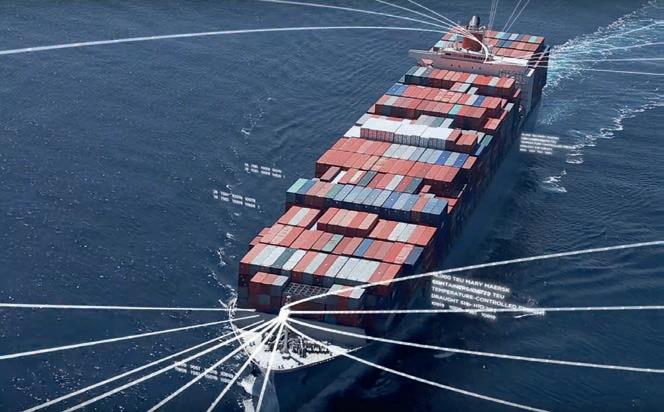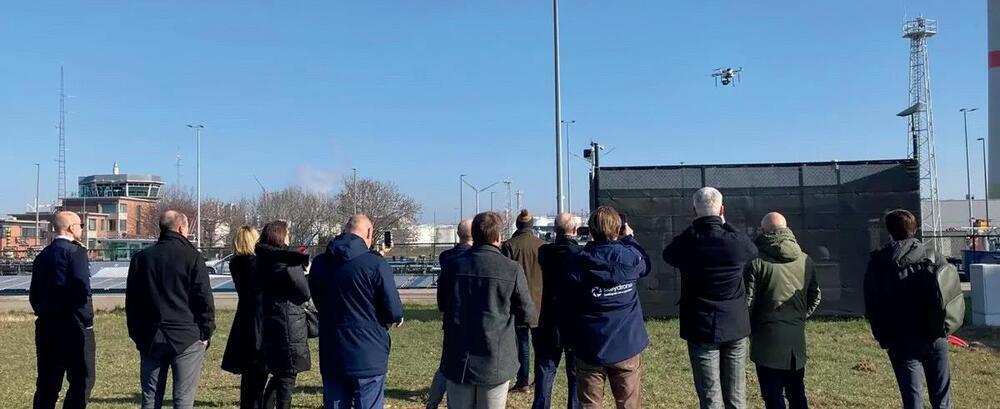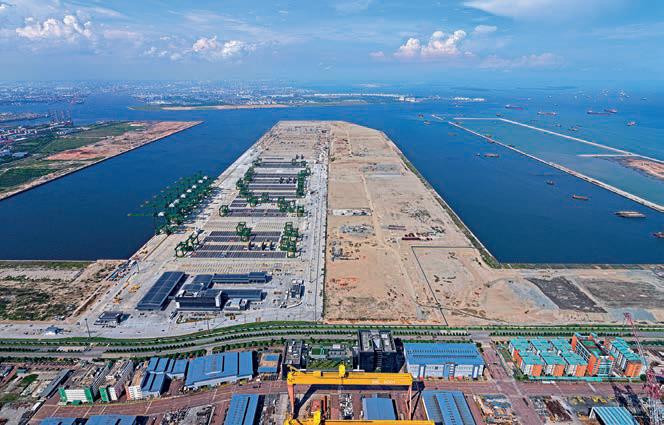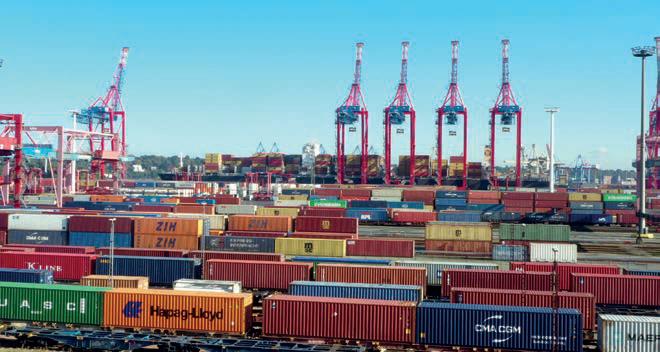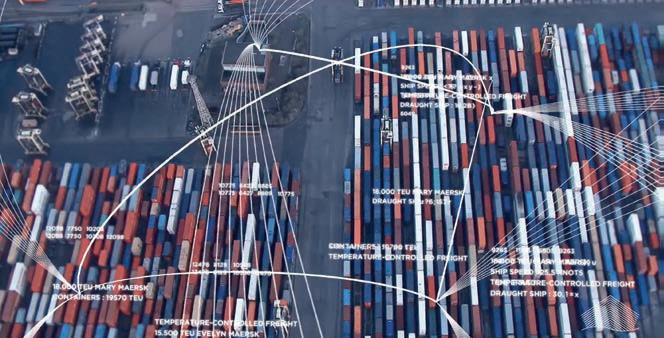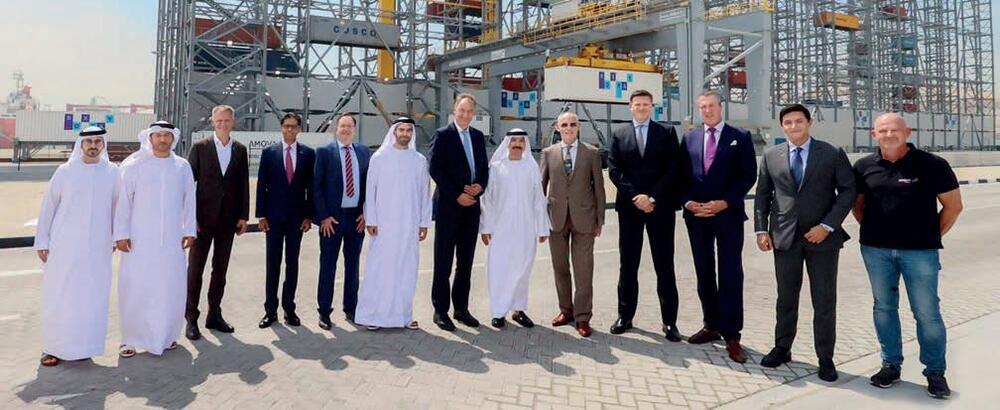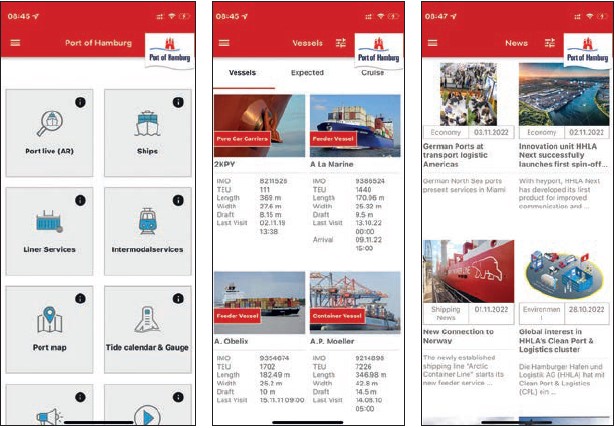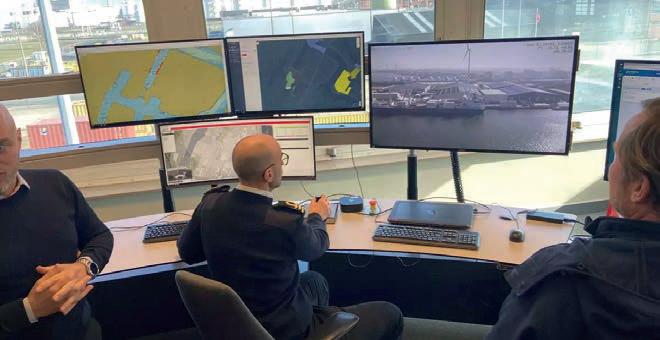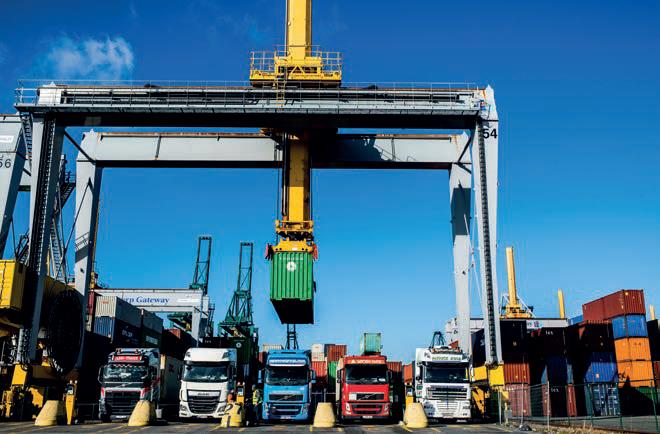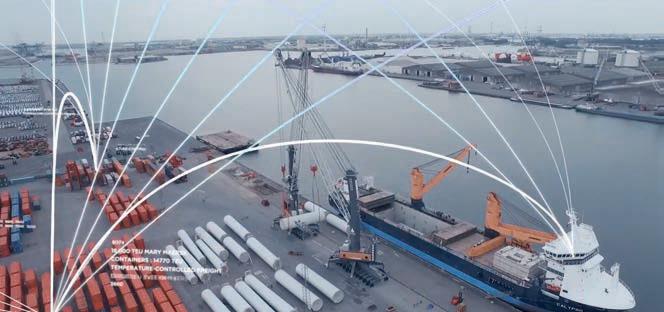How ports are using technology to boost efficiency
26 June 2023Implementing technology can increase the capacity and efficiency of a port – for example, through optimising loading or unloading cargo operations and reducing the number of workers needed to manage such processes. Jenny Eagle investigates.
The ports industry is facing a range of emerging challenges including growing freight traffic, increasing pressure to address environmental concerns, operational challenges and the ongoing pandemicinduced disruption. To overcome these challenges, port operators are increasingly turning to technology.
According to a report by KPMG, Anchored in the New Reality, six technologies are emerging as key enablers of more efficient operations: the Internet of Things (IoT), blockchain, drones, high-bay storage (HBS) systems, data and analytics applications, and digital exchange platforms.
IoT is considered the cornerstone of the broader technology transformation due to the clear need to digitalise the delivery process for monitoring cargo and deliveries using smart sensors.
HAMBURG
The port of Hamburg, one of the busiest ports in Europe (along with Rotterdam and Antwerp), initiated a strategic programme in 2011 to evolve into a ‘smart port’ to optimise capacity and maximise efficiency. It did this through the adoption of IoT technology in the port ecosystem by installing sensors to monitor the use of physical assets (e.g. trucks, cranes, carriers, roads and warehouses), using GPS and georeferencing to monitor movement of traffic.
The port handles a mix of containers and bulk cargo (dry and liquid), both of which see a continuously steady increase in volume. Containers passing through it are expected to rise to 25 million in 2025, and total cargo handled to 296 million tons in the same year.
Sensors monitoring the use of cranes, carriers, roads and infrastructure (parking lots and warehouse storage rooms) identify recurring underused capacity and allow for making adaptations to optimise utilisation by relocating assets or rerouting goods flows. Smart storage systems with temperature, humidity, ventilation and barometric pressure sensing ability in warehouses or containers can detect the needs of the cargo they contain and adjust these factors to increase product quality and decrease cargo damage. Cameras, opening sensors, and heat detection sensors along with alarm systems prevent theft, and provide solid input for planning security improvements.
The life cycles of port assets and infrastructure are extended, and the likelihood of defects that influence normal port activity is drastically reduced due to smart maintenance systems. Smart maintenance systems track the usage and wear and tear of fixed assets, and can pre-emptively detect damages and malfunctions, saving costs on reparation, replacements and mitigation in case of a breakdown. They also extend the life cycles of port assets and infrastructure and reduce the likelihood of defects that would disturb the normal flow of activity in the port.
Smart energy management is also a priority in moving towards a greener port, with Hamburg port accounting for over 40% of Hamburg city’s total energy consumption. As part of this plan, certain infrastructure is equipped with smart meters that can monitor and control energy use by adjusting factors like temperature.
In other news, the port has also introduced the app Port Live (AR) for visitors to access real-time data on ships and terminals. Information on all terminals in the Port of Hamburg and the Metropolitan Region can be found there as well as liner services between Hamburg and ports worldwide. Around 1,000 other ports are connected with the Port of Hamburg. In addition to container cargo, general cargo as well as roll-on/roll-off (RoRo) or heavy lift connections are also offered on the app.
ANTWERP
Blockchain technology has the potential to digitalise supply chains, eliminate record-keeping efforts, promote paperless transactions, and streamline supply chains by enabling real-time communication. In 2017, the port of Antwerp announced a pilot project for more efficient and secure container handling leveraging blockchain technology in collaboration with NxtPort, an open data platform in which local application developers can develop their logistic solutions.
NxtPort also provides access to logistics applications and application programming interfaces (APIs) for specific communities within the connected ports. An API is a toolset that programmers can use to create new software for the platform. By sharing data transparently and setting up open global communities, international supply chains can be significantly optimised.
NxtPort recently announced it is partnering with Vopak Ventures in a joint venture led by NxtPort’s Geert De Wilde and Mark Noordhowk Hegt.
“The partnership with Vopak Ventures offers NxtPort an unprecedented opportunity to expand its activities in different locations. In doing so, we are actively contributing to the digital interconnection of maritime clusters across the whole world in a spirit of openness and cooperation,” says De Wilde.
“We are convinced that digitalisation is a critical success factor for the ports of the future. We also know that digital platforms can only be truly successful if they are independent in their role. This means platforms should be open to all logistical players, including those who are each other’s competitor,” adds Leo Brand, chief information officer, Vopak.
Drones are quickly becoming a regular tool in the ports and logistics industry. Ports are using drones in their routine monitoring to improve safety, reduce costs and enhance process efficiency. Around the world, from the Netherlands to Vietnam, ports are using airobotics drones for controlling aerial cargo transport, monitoring ships, cleaning the local environment and tracking the construction of ports.
Earlier this year, the Port of Antwerp- Bruges and its partners DroneMatrix, SkeyDrone and Proximus were given the green light to launch their drone-in-a-box network D-Hive. This means operational authorisation was given for beyond visual line of sight (BVLOS) automated drone flights to take place on a daily basis in the Antwerp port area, a first in the world.
Following the announcement, representatives from European and national regulatory authorities related to drone aviation (including the likes of Eurocontrol, FPS Mobility and Transport, and Skeyes) witnessed the first authorised flight of a BVLOS drone near the Kieldrecht lock, operated from a command and control centre located in the centre of the port.
The operational authorisation is built around a BVLOS framework built by SkeyDrone and approved by the Belgian Civil Aviation Authority and the European Union Aviation Safety Agency as a legitimate and safe framework for BVLOS flights.
HIGH-BAY STORAGE
HBS systems are automated container handling systems that stack containers up to 11 floors high, delivering more than three times the capacity of a conventional yard with enhanced performance including significant gains in handling speed, energy efficiency, safety and reduced operating costs.
DP World in Dubai recently started its pilot phase of BoxBay – an HBS system, in collaboration with industrial engineering specialists SMS Group in Germany – to reduce by at least 70% the land area needed to support terminal operations, and increase yearly yard throughput per hectare by more than 300% in comparison with a rubber-tyred gantry crane (RTG) container yard.
Originally created to handle heavy metal coils, the storage system was refined for port logistics after SMS Group proved the technology in the metals industry. DP World and SMS Group built a pilot facility at Jebel Ali’s Terminal 4 in January 2021. By the end of June 2022, 190,000 container movements had been carried out under realistic operating conditions to verify the system’s market maturity.
DP World announced the first commercial use of BoxBay at South Korea’s Pusan container terminal and more recently signed a contract with Pusan Newport Corporation (PNC). PNC already operates one of the highest-performing container terminals in Asia, and the addition of BoxBay’s technology will allow PNC to boost its efficiency even further.
“This is where the future of trade begins. We have taken a technology that has proven its effectiveness in the metals industry in Germany and further transformed it to create BoxBay, an innovative container storage system to enhance global trade,” says Sultan Ahmed Bin Sulayem, CEO, DP World. “Our pilot scheme in Jebel Ali (Dubai) has already shown the advantages of a fully automated, sustainably powered high-bay storage system. I’m proud that DP World has led this innovation that will now be adopted in Pusan. The technology reflects our continuous efforts to embrace technologies that enhance the flow of trade and further enhances Dubai’s position as a global leader in the ports and logistics industry.”
BoxBay will be integrated with the existing automated rail-mounted gantry/ truck operations as a retrofit on an existing empty storage area. The system provides direct access to each container at any time, eliminating 350,000 unproductive moves per year. This will improve overall truck servicing time by 20%, enhancing PNC’s service delivery to its customers.
Tiemen Meester, COO Ports & Terminals, DP World, says: “With the introduction of the BoxBay high-bay storage system, we will be able to better serve our customers while keeping our people safe and cutting carbon emissions from the environment.”
SINGAPORE
Data and analytics applications are allowing supply chains to adopt a proactive rather than a reactive response to supply chain risks. Singapore’s Maritime and Port Authority (MPA) has established a dataenabled traffic prediction tool to forecast vessel arrival times and estimate potential traffic congestion using predictive analytics.
In 2020, the MPA and tech firm IBM began rolling out an analytics and data scheme aimed at improving maritime and port operations and completed the pilot trial of three modules under the MPA-IBM Safer (Sense-making Analytics For maritime Event Recognition) project, to support Singapore’s growth in vessel traffic.
Altogether, there are seven modules under Project Safer, which offers new capabilities for automating and increasing the accuracy of critical tasks that previously relied on human observation, reporting, very high frequency (VHF) communication, and data entry. The seven modules include: automated movement detection, infringement analytics, pilot boarding detection, bunkering analytics, prohibited area analytics, vessel traffic arrival prediction, and utilisation detection and prediction.
“We will continue to develop our digital strategies through the use of data analytics and machine learning technologies to optimise our port operations and enforcement to meet existing as well as future demands in the areas of next-generation port enforcement and monitoring of vessel movements,” says Andrew Tan, CEO, MPA.
Robert Morris, VP, Global Labs, IBM Research, adds: “AI is transforming every industry and the marine domain is no exception. The Safer solution is an example of how IBM’s AI research for business is supplementing and increasing human capacity by making our waterways and sea lanes safer and more efficient.”
Tuas Port, in Singapore, which opened in September 2022 and is expected to be completed in 2040, will be the world’s largest fully automated terminal, with a handling capacity of 65 million twenty-foot equivalent units (TEUs), almost double the handling volume of 37.3 million TEUs handled in 2022.
To further maritime digitalisation and the development of the future concept of operations, MPA and Infocomm Media Development Authority (IMDA) signed a memorandum of understanding (MOU) in August 2022 to provide full maritime 5G coverage in its anchorages, fairways, terminals and boarding grounds by mid-2025.
A total of 12 maritime 5G base stations will be set up to complement the onshore 5G communication infrastructure. Three of the base stations will be ready this year to support testing and development of new digital applications, such as remotely assisted pilotage advisory, digital bunkering, delivery drones, and telemedicine. The remaining nine base stations will be set up by 2025.
Elsewhere, the port of Hamburg in Germany uses analytics to aggregate various data points (i.e. vessel positions, height and width of bridges, etc.) to optimise internal port operations.
Additionally, smart ports are leveraging other technologies such as AI to enhance predictive insights, and cloud computing, data management and data sharing among various stakeholders. Robotic process automation (RPA) is being leveraged to automate processes across several support functions such as finance, human resources and supply chain management.
Digital exchange platforms are being rapidly deployed by leading ports over the past decade. These platforms digitalise the entire logistics supply chain by creating a marketplace for various sub-segments of the market. In 2020, DP World acquired SeaRates.com, a digital platform that enables customers to transport cargo worldwide at the click of a mouse.
DP World has also created the Digital Freight Alliance, an online association that brings freight forwarders globally onto one platform, giving them access to new tools, routes and services, and enabling them to do more business anytime.
